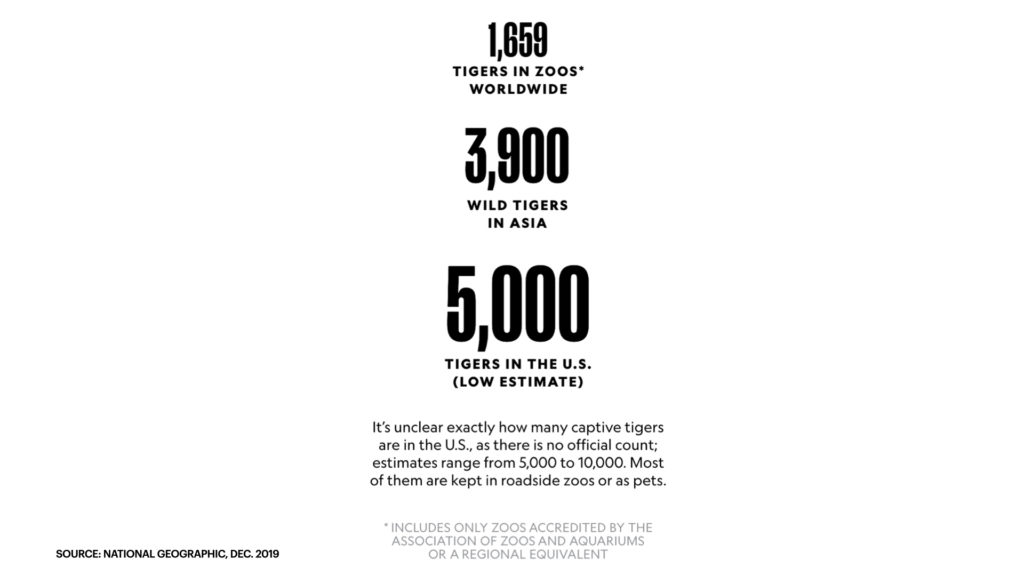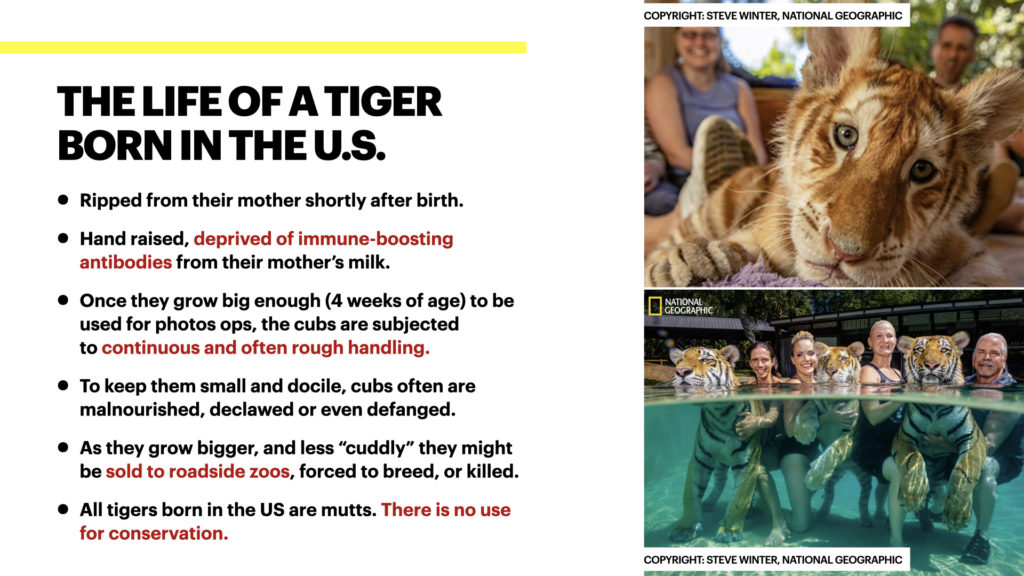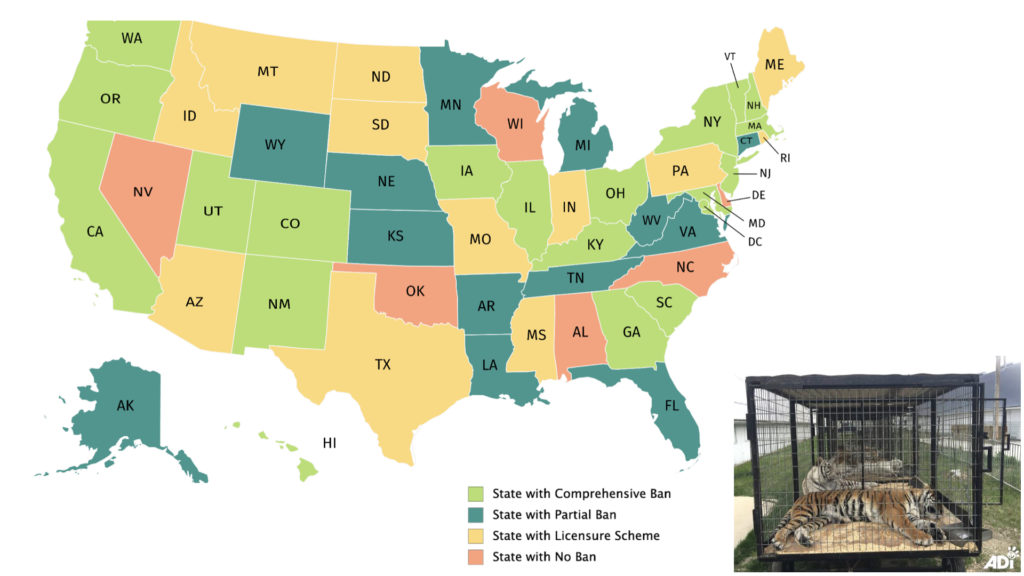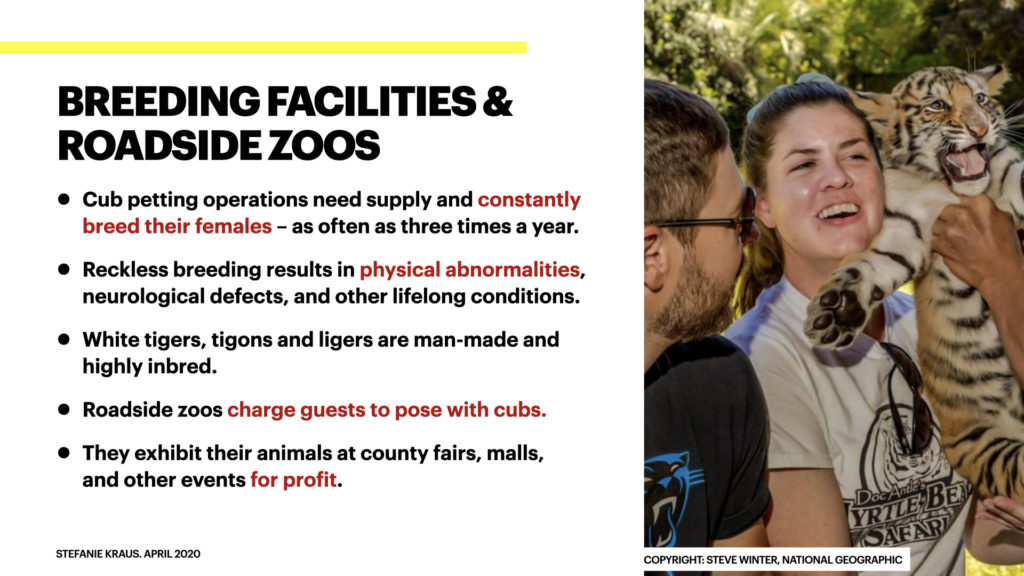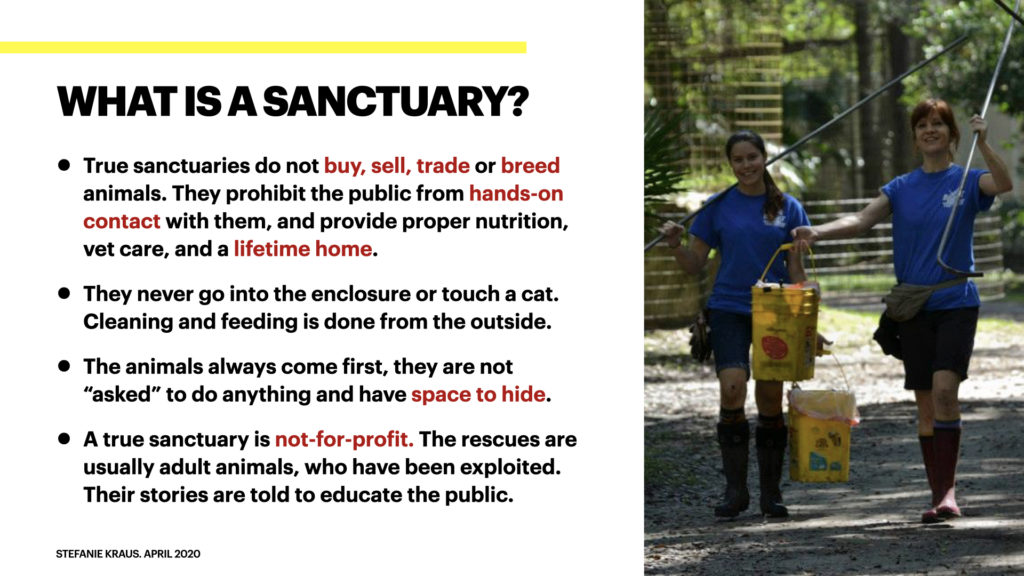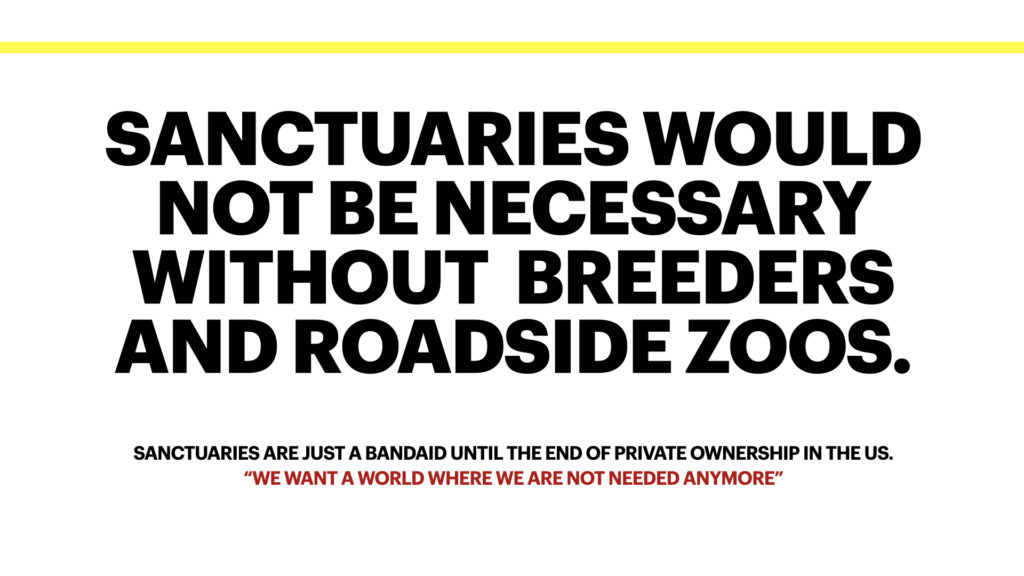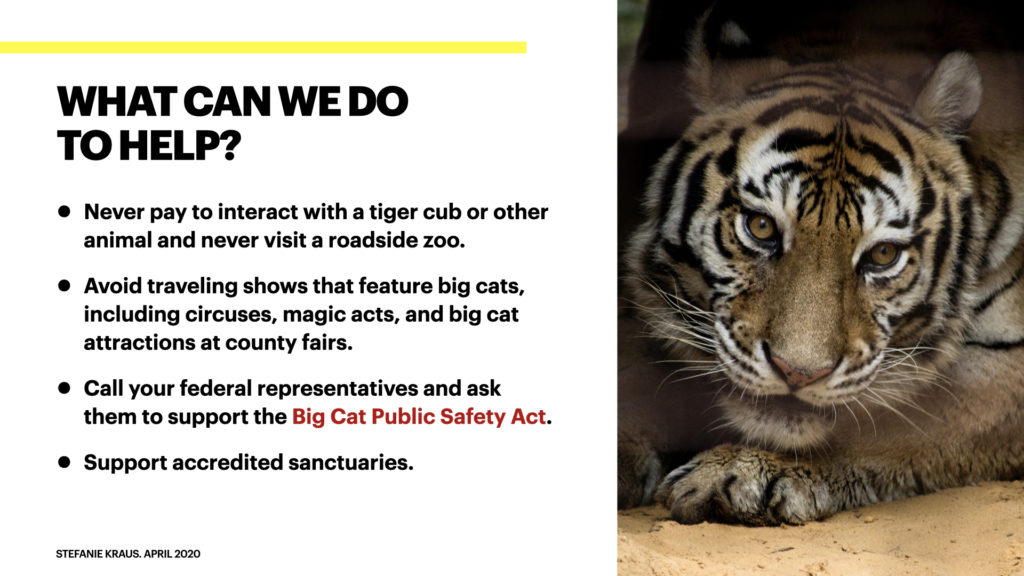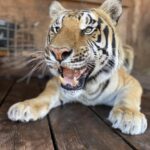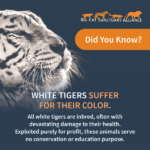“Should we privately own big cats?” Jack, a developer who is part of a tech team I work with, asked this question during a casual meeting. Like many others, he had watched Tiger King and was curious about people's opinions. Based on my passionate answer, I was asked to give a presentation to the whole company during lunch-and-learn. The images in this blog post are slides from my talk.
What is a pet?
From Wikipedia: A pet is a domesticated animal that lives with people. Archaeologists have found evidence that suggests that cats in Cyprus were domesticated around 9500 years ago.
What is a big cat?
The term "big cat" is used to refer to any of the five living members of the genus Panthera, tiger, lion, jaguar, leopard, and snow leopard. They are called wild animals for a reason. These cats have not been domesticated, and have no natural disposition to be in contact with humans.
Tigers in America - by the numbers (source: National Geographic)
These numbers are from a very well researched article around tigers in captivity in the U.S. It was released in December 2019 in National Geographic and the number may have changed since then.
It’s important to know that all tigers born in the US are mixed breeds, just like mutts at the shelter. Because of this, there is no use for conservation. Only purebreds can be released back into the wild. Importing tigers from Asia is illegal and against the endangered species act.
Whenever you see a picture like this, you might think “this is so cute, I want to hold this tiger baby.” But if you look closer, you’ll notice that the animal is distressed and then ask yourself: “where is the mom?”
This baby was bred here. He or she looks scared, depressed, and possibly drugged. He was taken from his mom shortly after birth and has been bottle-fed by humans, which is completely unnatural. In the wild, tiger cubs stay with their mom for 2 to 3 years. They get immunity-boosting nutrients from breast milk, learn how to hunt, and how to be who they are truly meant to be.
This is a wild animal, not a domestic kitten. It needs to be raised by its mother. The main purpose of a breeding facility is to make money, it’s a business.
Currently, laws differ from state to state. This map shows the state laws around private big cat ownership. Orange and teal show the states with no or partial ban. Yellow shows the states where you need a license. It’s fairly easy to get, and not very expensive. Lastly, the states in light green are places where the private ownership of big cats is banned. However, breeders still can get a license in another state and transfer cats from there. The USDA is in charge of enforcing those laws, but it’s very difficult and there are not enough inspectors to monitor all breeding facilities and roadside zoos.
The enclosure size required by the USDA is the same as a circus transport cage. This means that the tiger will eat, sleep, go to the bathroom in a cage only slightly bigger than their body.
In order to stay in business, cub petting operations breed, buy, sell, and trade their animals. They need supply and constantly breed their females – as often as three times a year. This reckless breeding results in physical abnormalities, neurological defects, and other lifelong conditions for the cubs. Female tigers often develop breast cancer or uterine tumors.
Roadside zoos are not accredited by the Association of Zoos and Aquariums. They charge guests to pose with cubs. They exhibit their animals at county fairs, malls,
and other events for profit. The animals at breeding facilities and roadside zoos are commodities and are seen as property.
True sanctuaries do not buy, sell, trade, or breed animals. They prohibit the public from hands-on contact with them and provide proper nutrition, vet care, and a lifetime home. The animals, their needs and desires always come first.
At WildCat Ridge Sanctuary, we provide our cats with the highest quality food, proper vet care, enrichment, and spacious enclosures.
We are verified by the Global Federation of Animal Sanctuaries, and follow the highest standard of excellence as defined by their guidelines.
How do the animals end up at a sanctuary?
True sanctuaries only accept animals confiscated by law enforcement or from owners who are trying to get rid of them. Often, sanctuaries collaborate to find homes for all animals, it’s often difficult, time-consuming, and incredibly hard work.
Some of our cats here at WildCat Ridge Sanctuary came from breeders or roadside zoos. An example is Calvin and Hobbes, whose life before arriving at their forever home was heartbreaking. Other times, a well-intentioned owner realizes that they can’t offer the care or space a big cat needs - Listen to this interview by Nora’s former owner.
And more often than not, people surrender a cat since they realize that wild animals don’t make good pets.
Between sanctuaries and breeders, it’s a very simple cause and effect: Breeders & roadside zoos create the problem, and sanctuaries clean up the mess. We are just a band-aid, and we want a world where we are not needed anymore.
The sad reality is that the life of any tiger being born in the U.S. is tragic and unnatural.
Sanctuaries look forward to a time when they can be put out of business after the private ownership of big cats has been abolished.
Let’s go back to the start of this post: “Should we privately own big cats?” Jack, my developer friend who originally asked that question recently told me that my presentation inspired him to do more for animals. He understands that wild and exotic cats are not pets and that they need to be protected from us humans.
What can we all do to help?
The best starting point is to always consider the needs of the animal over your own desires. Please don’t ever pay to interact with a tiger cub or other animal and never visit a roadside zoo. Avoid traveling shows that feature big cats, including circuses, magic acts, and big cat attractions at county fairs. The situations these animals were rescued from, and the abuse and deprivations many of them suffered, should not be allowed to exist.
Take action to support the federal Big Cat Public Safety Act, which would end inhumane cub petting attractions. We are now closer to passing the bill than ever before. Please call your congressperson or senator today and ask them to support the Big Cat Public Safety Act.

